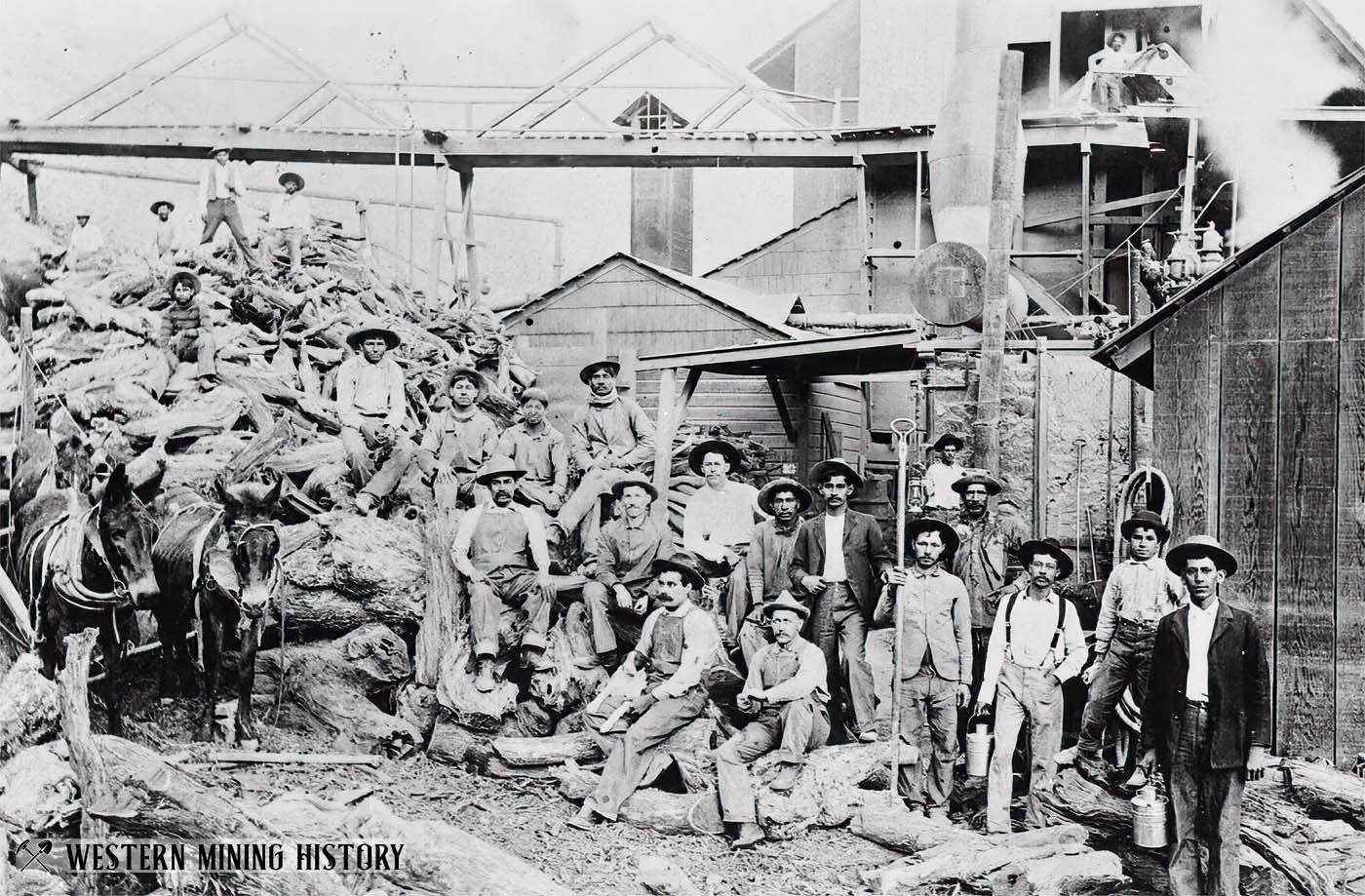Kofa History
The gold-bearing vein that would become the King of Arizona (Kofa) mine was discovered in 1896 by Charles E. Eichelberger. News of the strike traveled quickly, and by April of 1897 a settlement of around 100 residents had formed at the discovery site.
During this period about $40,000 in placer gold was retrieved from deposits down slope of the Kofa vein. It was the lode mine that held the real riches however, and development of that mine would dictate the future of the town and district.
The greatest difficulty in developing the mine was the lack of water. In the first few years water had to be hauled great distances by mule to supply the camp. The first mill was built where water was available at Mohawk, which was located 50 miles from the mine by wagon road.
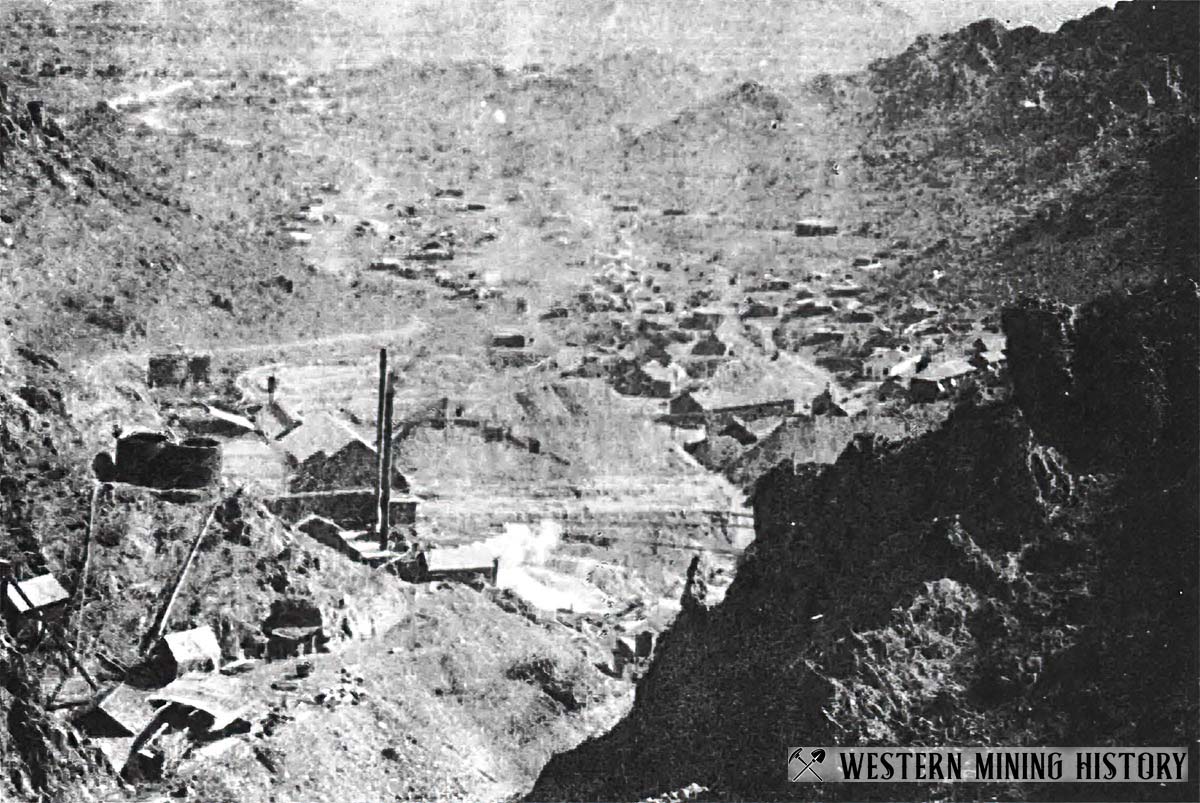
Attempts made to develop a water source at the mine were unsuccessful, although a December 28, 1897 article from the Arizona Republic revealed that drilling for water at the mine "revealed a new ledge rich in free gold." Finally, in 1899 wells were drilled as close as five miles from the mine that struck water at a depth of 1,000 feet. The water was piped from the wells to the mine site.
With the water problem solved, a new mill was constructed at the mine, and around 300 people were living at the town that was now named Kofa, after the King of Arizona mine. The town was built almost entirely to serve the mine, and much of it was owned by the mining company. A post office was established during the summer of 19001.
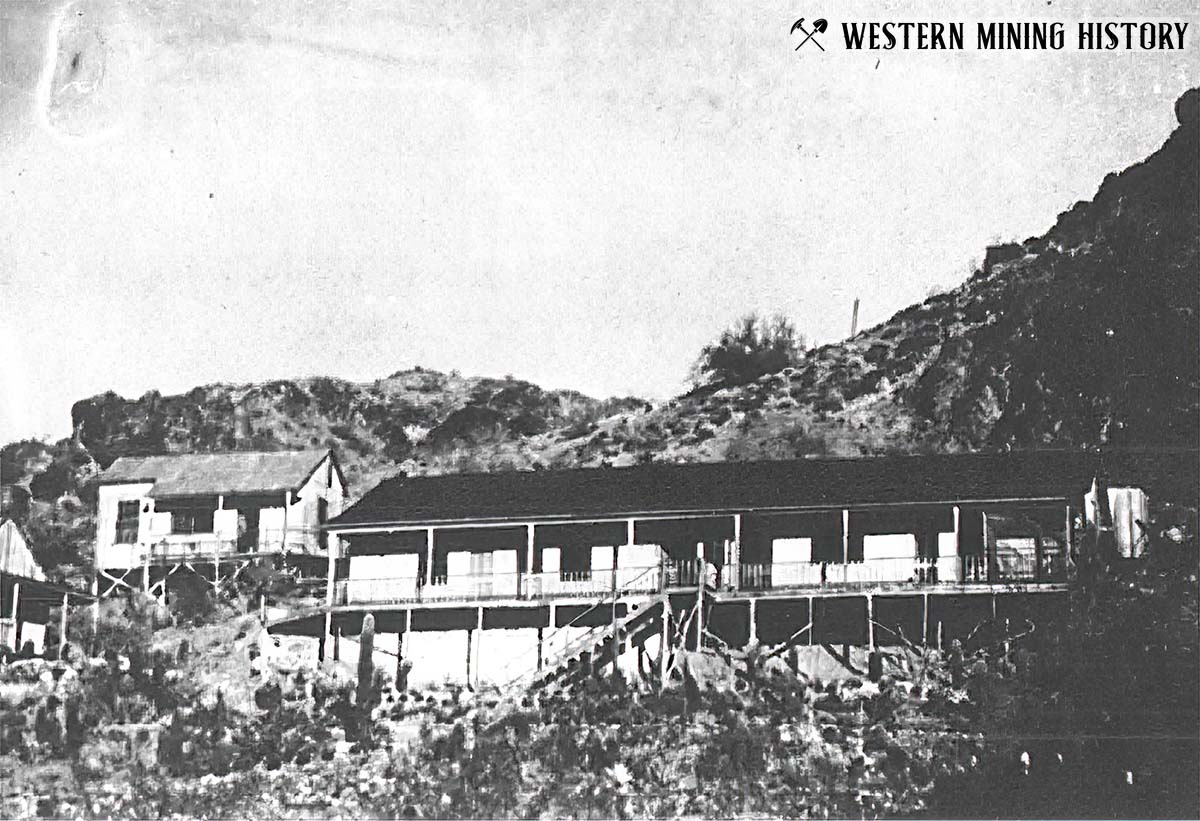
A July 20, 1900 edition of the Tucson Citizen described the camp: "Probably one hundred houses constitute Kofa, most of them tent structures, but there are several neat and commodious cottages." The company ran a store and mess hall for the miners, there was one hotel, a blacksmith, and four saloons. In 1900 a school was established to serve the growing number of families arriving at Kofa, many of which were from Cornwall. The town peaked at about 750 residents in the years after 1900.
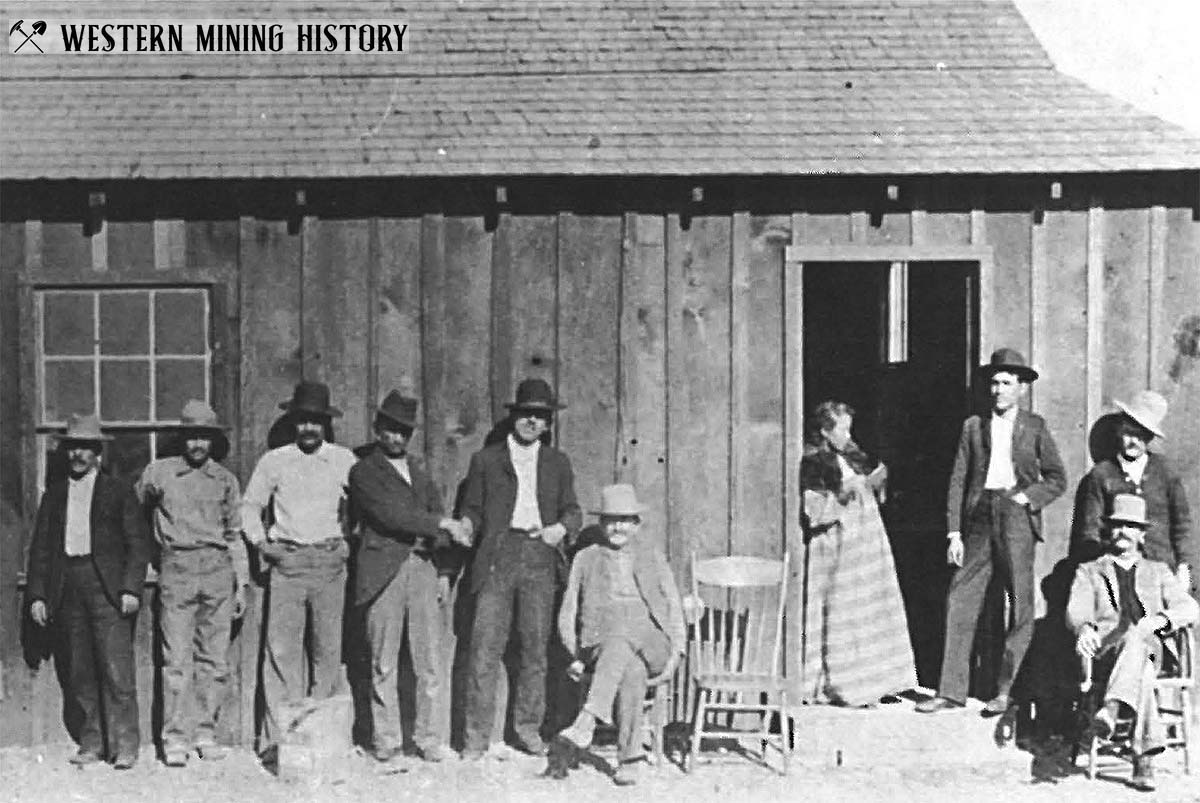
Some of the notable events in Kofa were reported by newspapers statewide, including this incident from December of 1900:
Two huge boulders of ore became loosened from their bed at the apex of a point in the mountain just above the Glory Hole last week and took a leisurely slide down the hill, landing about ten feet from the blacksmith shop, which had they encountered in their downward flight, would have been hard to find. They have since been blasted up and run through the mill where their value is much better appreciated than by the boys of the shop.
The King of Arizona mine's peak production years were from 1897 to 1909. The ore became progressively lower grade at depth until it was no longer profitable and the mine closed in 1910.
The town of Kofa declined significantly but did not immediately die out. Small-scale lode mining and sporadic placer mining kept some of the men in the camp employed, and a new company was formed that made significant investments in reopening the King of Arizona mine in 1918, although that effort was not successful. By 1928 not much was left of the town and the post office closed.
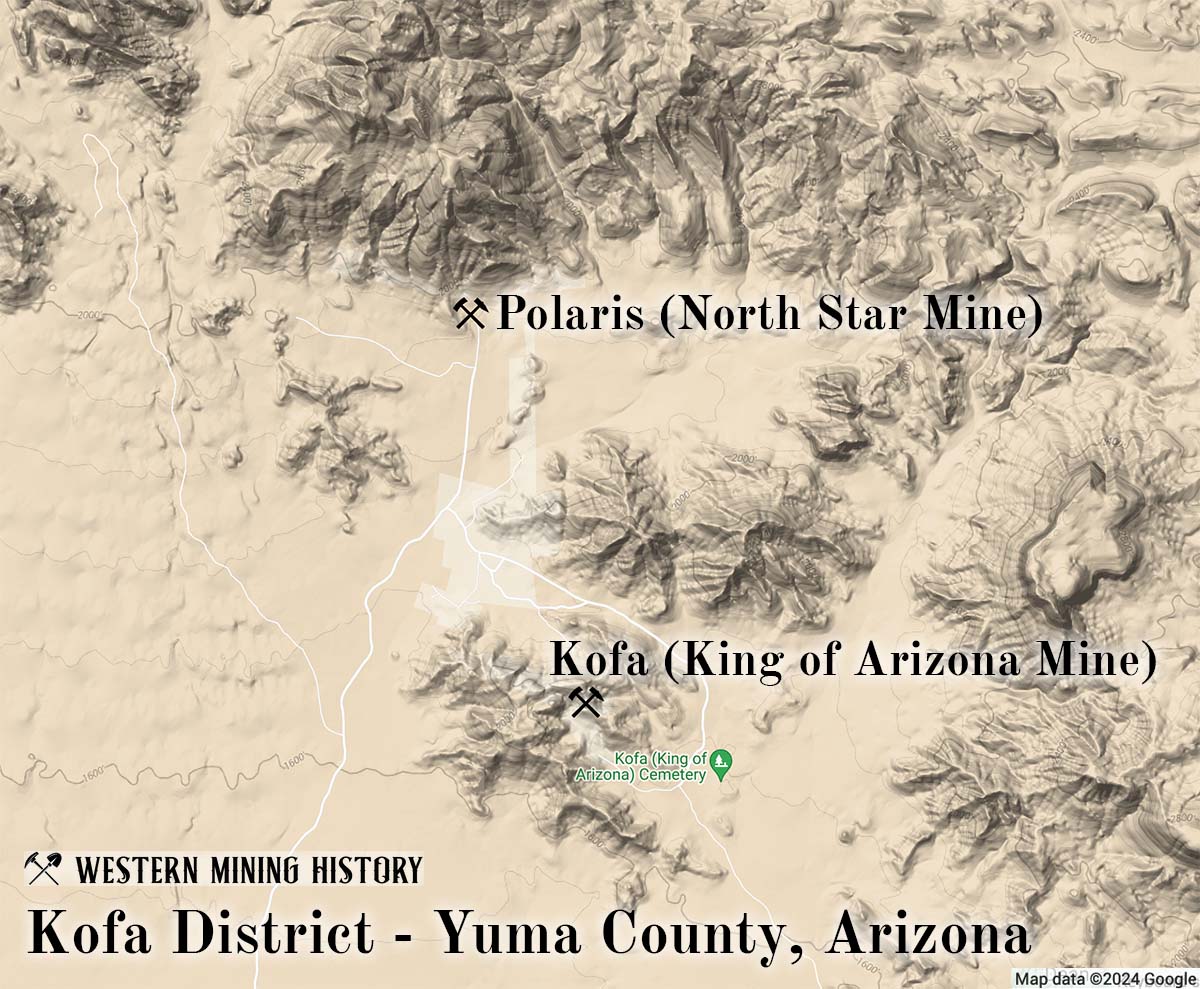
Just a mile and a half north of Kofa was the North Star mine and the Polaris camp. The King of Arizona and the Polaris were the primary producers of the Kofa district and are credited with a combined 4.6 million dollars in gold (at a historical gold price of $20.67 per ounce.) The production records are incomplete however, and the actual total is thought to be much higher.
Notes
1. Some sources state that a post office was established at Kofa in 1899. However, a July 15, 1900 edition of the Arizona Republic states that "the big Yuma County gold camp is soon to have a post office, which will be named Kofa."
Arizona’s Kofa Gold District
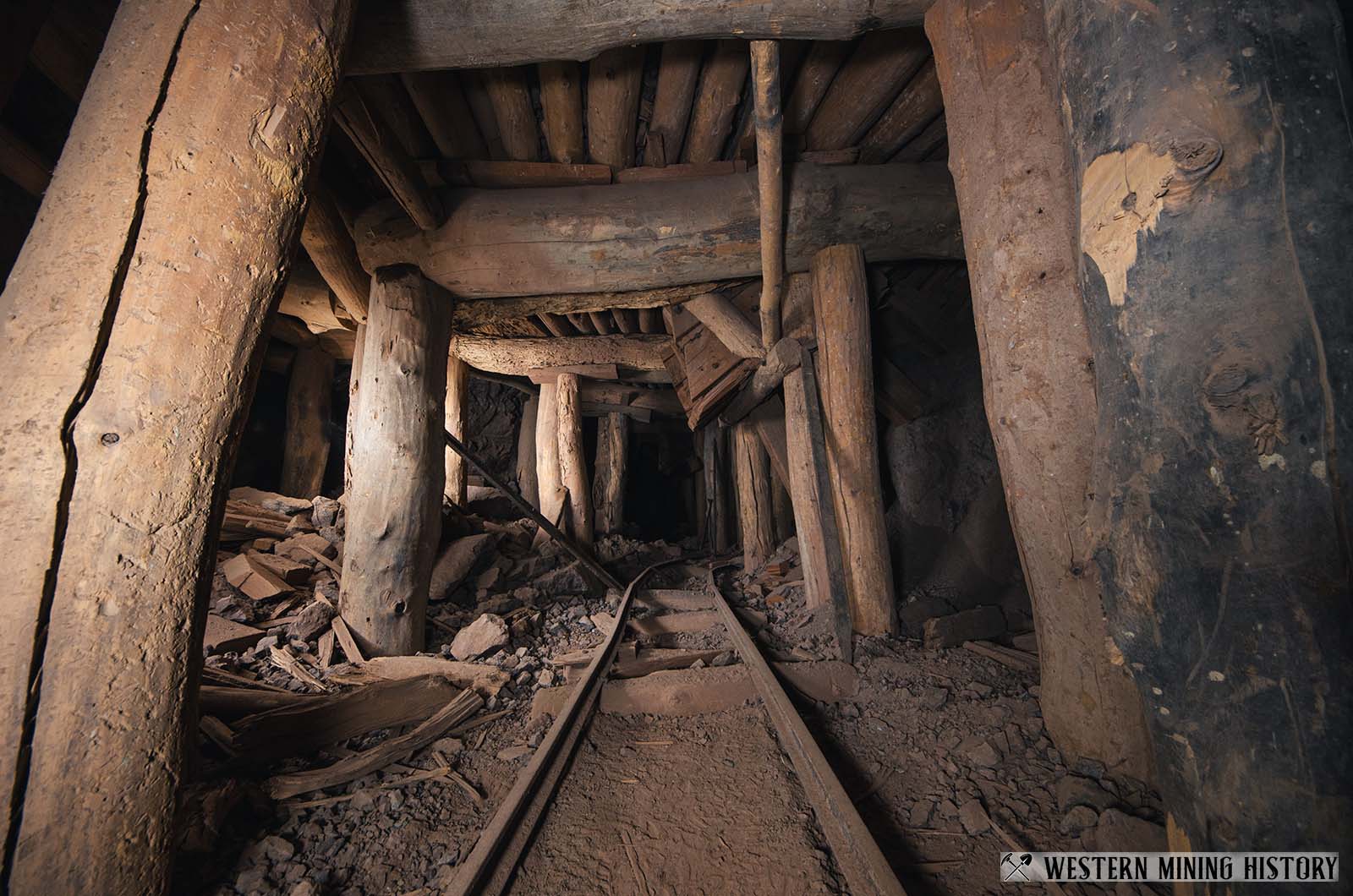
Arizona’s Kofa district was a significant producer of gold between 1897 and 1911. This article summarizes the history of the two primary mines of the district – the King of Arizona and the North Star. Featuring the photography of Owen Kennedy. Continue reading... (members only content)
Arizona Mining Photos
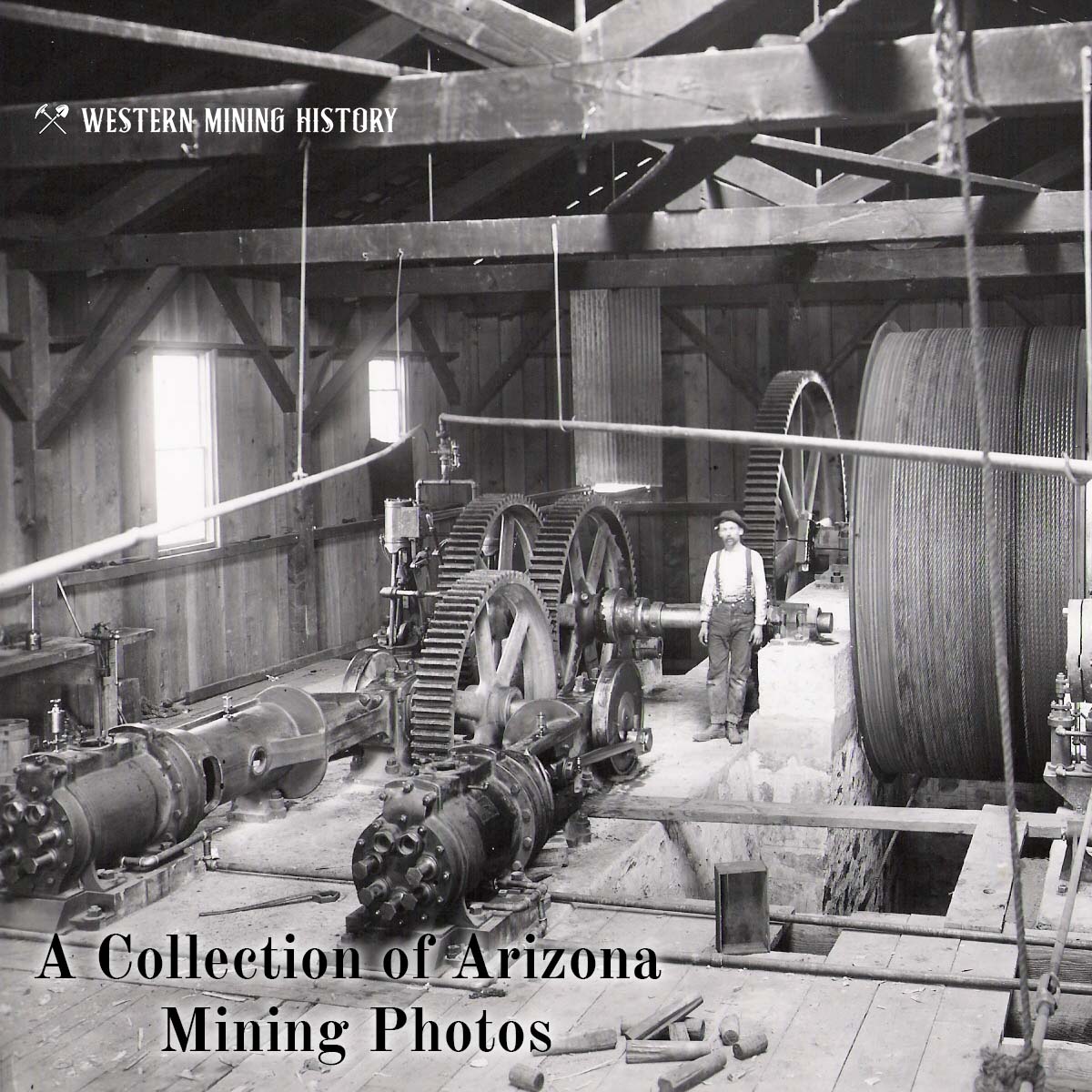
View over 35 historic Arizona mining scenes at A Collection of Arizona Mining Photos.
Arizona Gold
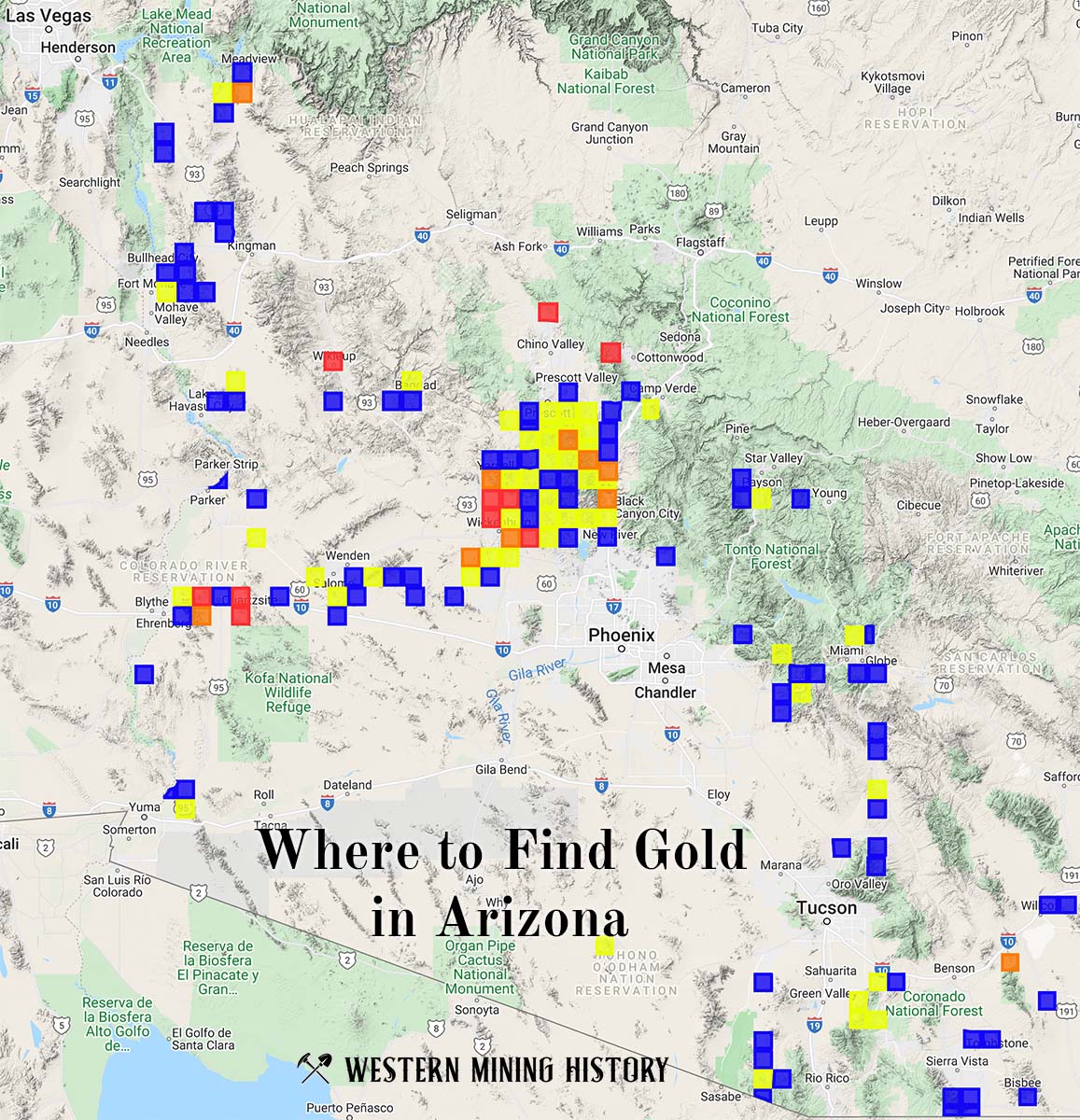
"Where to Find Gold in Arizona" looks at the density of modern placer mining claims along with historical gold mining locations and mining district descriptions to determine areas of high gold discovery potential in Arizona. Read more: Where to Find Gold in Arizona.
